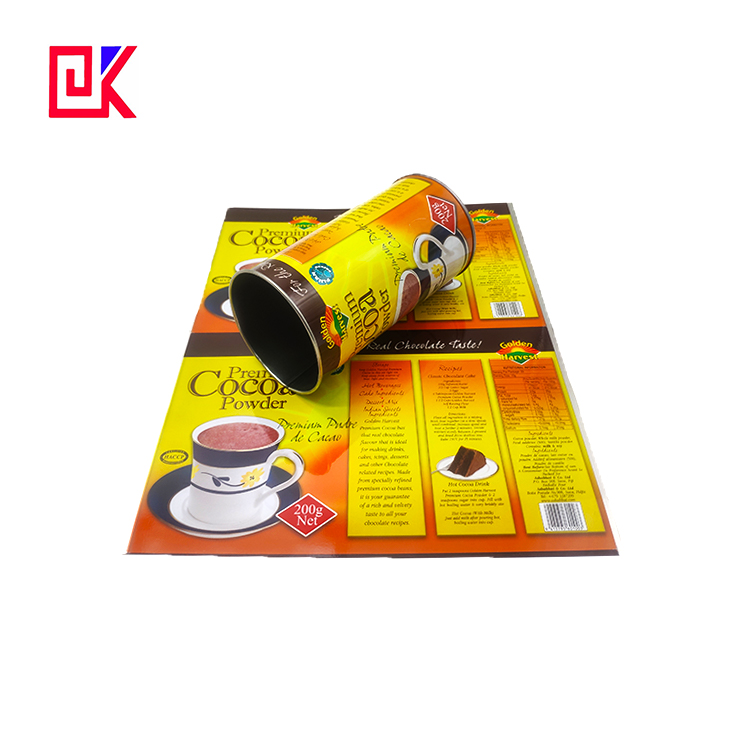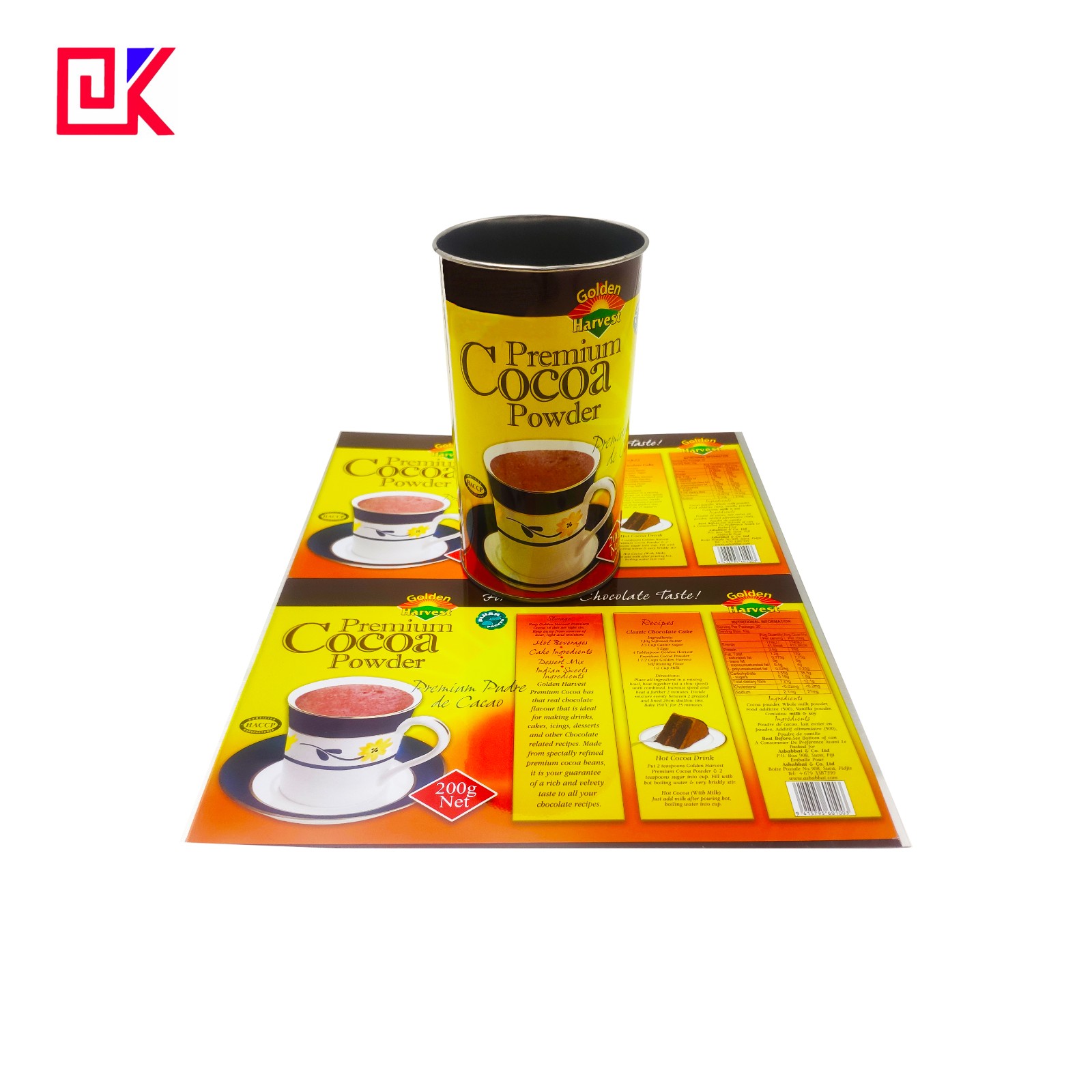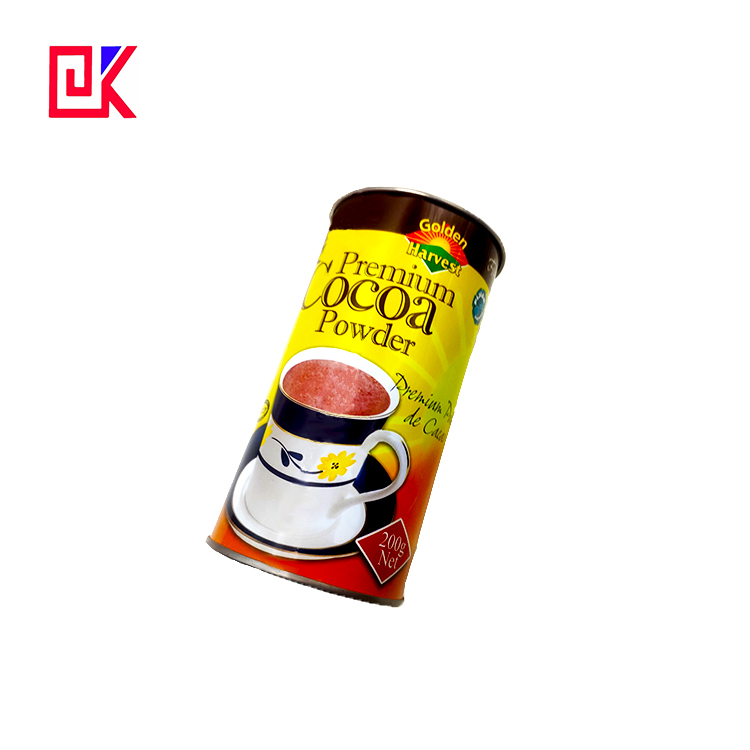Specification of Food Grade Printing Metal Tins For Coffee Box (coffee cans):
Product name | Food Grade Printing Metal Tins For Coffee Box (coffee packaging) |
Standard | AISI, ASTM, BS, DIN, GB, JIS (GB/T2520, JIS G3303, ASTM A623M, EN10202) |
Material | Tinplate sheet/Tinplate coil (MR SPCC) |
Steel type | MR grade for metal packaging |
Tin coating | 1.1~11.2g/m2 (1.1/1.1, 2.2/2.2, 2.8/2.8, 5.6/5.6, 8.4/8.4, 11.2/11.2) |
Temper Grade | T1~DR10 |
Annealing | BA,CA |
Passivation | 311GR |
Oiling | DOS |
Thickness | 0.18~0.23mm (Tolerance: +/-0.01mm) |
width | 508~960mm (Tolerance: 0~3mm) |
length | 712~1145mm |
Internal coating | White coation or Gold lacquer |
Outside printing | White coation+CMYK Printing+transparency lacquer |
Application | For any packing Box,tin, Can, Bucket, etc(Food, oil, medicines, cosmetics, perfume,toys, chemicals, etc.) |
MOQ | 2 tons for each size |
Printing capacity | 4000 tons per Month |
Port of Loading | Foshan/Guangzhou/Shenzhen |
Lead time | 15~25 days after receipt of 30% T/T deposit. |

Printing and Can

Printing Detail
All of our products support customization, if you need please feel free to contact us.
Tin coating on tinplate:
Classification | Designation of | Nominal tin (g/m2) | Min average (g/m2) | Remark |
Equai tin coating(E) | 1.1/1.1 | 1.1/1.1 | 1.8 | All specification |
2.2/2.2 | 2.2/2.2 | 4.0 | All specification | |
2.8/2.8 | 2.8/2.8 | 5.0 | All specification | |
5.6/5.6 | 5.6/5.6 | 10.5 | All specification | |
classification | 2.2/1.1 | 2.2/1.1 | 2.0/0.9 | All specification |
2.8/1.1 | 2.8/1.1 | 2.25/0.9 | All specification | |
5.6/1.1 | 5.6/1.1 | 5.05/0.9 | All specification | |
2.8/2.2 | 2.8/2.2 | 2.25/2.0 | All specification | |
5.6/2.2 | 5.6/2.2 | 5.05/2.0 | All specification | |
5.6/2.8 | 5.6/2.8 | 5.05/2.25 | All specification |
Surface state on tinplate:
Type | Marks | Suface state | Characteristics |
Single Reduce | B | Bright Surface | Glazed surface obtained a thin layer of chromium and chromium oxide which deposits on the smooth. |
Double Reduce | R | Stone Surface | Glazed surface obtained a thin layer of chromium and chromium oxide deposit on smooth steel base featuring certain oriented stone figures. |
S | Silver Surface | Glazed surface obtained after melting treatment of electronicned raw material strip with rough matt surface. | |
M | Matte Surface | Matte Surface | |
R | Stone Surface | Glazed surface obtained a thin layer of chromium and chromium oxide deposit on smooth steel base featuring certain oriented stone figures. |
What is Printing Metal Tins?
Printing metal tins is to print patterns on tinplate (tin-plated sheet). It mainly uses the physical properties of water and ink to repel, and uses printing pressure to transfer the printing text to tin plate through a blanket, which belongs to the principle of lithographic offset printing. This process has special requirements for inks.

What is the process and charateristics of printing metal tins?
The process of printing tinplate is as follows:
Plain tin plate-coatings-plate making-printing tin plate-Shroud on the printed tinplate-Drying process for printed tinplate-Inspection of finished printed tinplate
1. Plain Tinplate
The thickness of printed tinplate for coffee box is usually between 0.18 and 0.23 mm. With the increasing demand for metal containers, the variety of tinplate is also increasing.The production of these types of tinplate not only reduces the cost of manufacturers and users, but also meets the electricity demand.
2. coatings
The role of coatings is to isolate the can wall from the contents, prevent corrosion and prevent the dissolution of heavy metals such as lead, iron, zinc, etc. to cause pollution to foods and other contents.
① Coating requirements in the can, The coatings in the can must meet the following requirements: The coating is an organic compound, and the main components are oil and resin.
② The coating layer isolates the article from the tinned layer and makes direct contact with the article.for coffee box and food tins,must have the following characteristics:
Ⅰ. Non-toxic, odorless, odorless;
Ⅱ. The coating film is dense, basically free of pores, and has good corrosion resistance;
Ⅲ. The coating film does not fall off when subjected to impact, folding, bending and other processing;
Ⅳ. Does not zoom during high-temperature welding Shedding without dissolution of harmful substances.
3. plate making
Although the process of making iron plates is similar to that of offset printing, they have different requirements in terms of process. As the iron plates serve the outer packaging of metal containers or products, it is important to understand the basic characteristics of metal packaging containers when making plates, such as motor oil cans need to consider the requirements of empty resistance welding when making plates. There is a certain space between the patterns, so that the product can be easily cut, high-frequency welded seams, and cans, such as battery shells, after printing. To arrange as many as possible within the specified tinplate size range, the forks should be easy to cut and punch the battery case. In addition, for coffee boxes, it is necessary to know the blanking knife edge size of the lid, and leave a certain amount of material accordingly, otherwise it will cause trouble to the punching of the lid. Under normal circumstances, according to the customer to provide the film and pattern, proofing before the official printing.
4. Printing tinplate
The structural principle of a tinplate printing machine is similar to that of an offset printing machine. The printing plate is mostly ps version. Before printing, make sure that the ps version is well familiar with product requirements. In the printing color, water-ink balance adjustment, printing pressure adjustment, and overprinting accurate adjustment are required. Since the tinplate surface is different from paper and does not have the pores of the paper, the pores cannot be arranged. When considering the color sequence, we cannot arrange too much area wet pressure wet multi colors Overprinting can only be performed on 50% or less of the dots.
5. Shroud on the printed tinplate
after finishing the varnishing, a layer of bright oil should be covered on the printed tinplate surface to increase the gloss of the surface of the printed product. At the same time, the hardness of the product surface can be improved, so that the printing ink layer has a certain flexibility and Corrosion resistance. The varnish for tinplate should have the following properties:
6. Drying process for printed tinplate
Coatings and inks need to be dried in a tunnel oven. The drying conditions of printing inks are usually between 130 ℃ and 160 ℃, the drying time is controlled at about 10 minutes. The drying oven is between 170 ℃ and 210 ℃, with the length of 30 meters. It is composed of three stages, namely the heating zone ,constant temperature zone and the cooling zone. Heating up is the first stage after the tinplate enters the oven. The main function is to raise the tinplate from room temperature to the set temperature. The main function of the constant temperature zone is to maintain the temperature reaching in the heating zone. The function of the cooling zone is to fully cool the dried tinplate prints. Once the cooling is not enough, the paint films are easily scratched when the tinplates are stacked. The stacking forks are prone to sticking. Baking time and machine speed. Relevantly, if the speed is too fast, the entire drying time will be shortened, and the paint and ink baking will not be sufficient during the peak temperature time, which will cause the ink and paint to become soft due to the imperviousness of the paint film. Eventually the food or beverage will taste bad after coming into contact with it. If the machine speed is too slow. It will cause over-baking.
7. Inspection of finished printed tinplate
The inspection of finished printed tinplate products is divided into two types: conventional physical and chemical inspection and special requirements inspection. The contents of conventional physical and chemical tests are as follows:
(1) Appearance tests are mainly performed with the naked eye.
(II) Physical and chemical indicators.Physical and chemical indicators include: impact resistance, adhesion, gloss, whiteness, ink layer surface hardness, cooking resistance, overprint, etc.
Production capability:
1). Our company have two factories:one is tinplate coating and printing, and the other is tin can making , can supply one-stop service from plain tinplate, coated tinplate ,printed tinplate ,lacquered tinplate till the final tin cans.
2). Smooth production ability 4,000tons each month .
3). OEM/ODM , Free of charges of Logo design and printing on your goods .